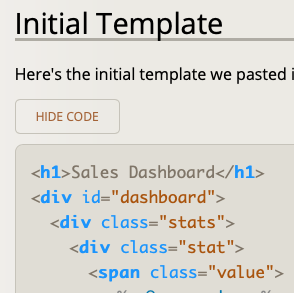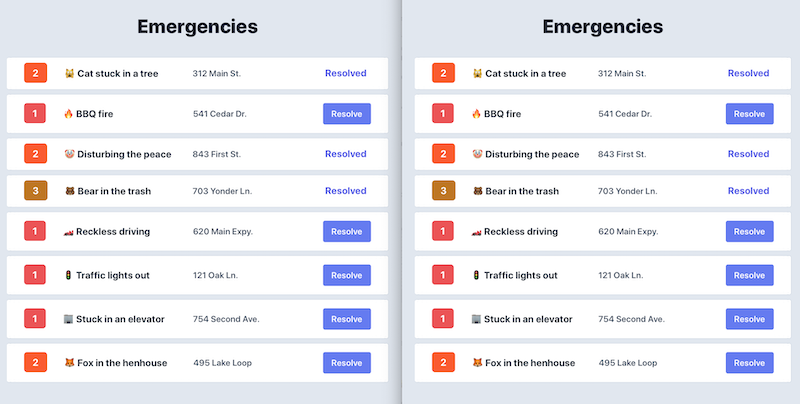LiveView Course Update #3: FAQ
May 04, 2020
We are so thankful for YOU…
…for being interested in our Phoenix LiveView course
…for snagging a copy of the course during early access (that’s most of you)
…for overwhelming us (in a good way) with your response!
⭐️ You are AMAZING!
We’ve never received this much feedback so early in a course. Please keep it comin’. And if you’re finding the course helpful or inspiring, it would mean the world to us if you’d help spread the word. 🧡
It’s proving to be unlikely that we’ll be able to respond to everyone personally and still set aside large chunks of time to work on the upcoming LiveView examples. ⚖️ But please know that we read every single piece of feedback.
Since many of the same questions keep popping up, we thought it’d be a good time for another update. (Course updates #1 and #2)
First up, how do I install and configure Tailwind CSS?
Some of you wanted to know the exact steps we took to install and configure Tailwind CSS so you could create a Phoenix app similar to the one in the 1-button-clicks-begin branch.
You betcha. 👍
See our step-by-step Adding Tailwind CSS to Phoenix tutorial. We also added a link to this in the Setup notes.
Dude, I’m a lazy typer! Can I get the initial HTML pasted in render?
Indeed, you can! We’ve updated the Notes for each video to include an “Initial Template” section where you’ll find the initial template we pasted into render.

Save all that typing for the good stuff! 👊
Wait, why did you have us install PostgreSQL?
In the setup exercise we had you install PostgreSQL. A few folks astutely pointed out that we don’t need it since none of the examples use a database.
And that’s true, until we get to the next example! ⛵️
Starting in Example #6 we’ll persist the example’s data in a PostgreSQL database and use Ecto to query it. And we’ll continue using a database in subsequent examples. In the initial examples we wanted to focus on LiveView core concepts without having to create database migrations, schemas, and the like.
Anyway, we get all the system-level stuff installed upfront so it doesn’t bog us down later.
📣 How will I know when new examples are released?
Since you’re on this mailing list, we’ll send you an email! You can also follow @pragmaticstudio on Twitter for updates. And Mike (@clarkware) posts various bits and bobs if you want micro-updates.
We’ll incrementally roll out videos and exercises as we complete them, and they’ll automatically show up in your account.
So sit back, relax, and we’ll deliver fresh examples wherever you’re hanging out! 🏡🏖⛺️
Hey, are you planning to create examples on…
Real-Time Notifications?
Absolutely! It’s a critical part of LiveView. Example #10 will laser-focus on the fundamentals of notifying users when relevant changes occur, and later examples will build on it.

Authentication?
How did you guess? It’s on the list, currently slated as Example #13!
Components?
Pity, only one of you asked about this. Just kiddin’. 😂
Clearly components are a big deal to nearly all of you. Trust us, we’ll get there! We had to lay a good foundation so when we get to components you’re not trying to learn 10 things at once.
JavaScript Integration?
We’d love to❗️and you can help us. The thing is, we haven’t yet identified a great example: one that’s common, realistic, and not super complex. Watching us type out a bunch of JS isn’t going to be pleasant. Hooking into a library might be sufficient. Maybe something with charting?
Please let us know if you’ve got any bright ideas.💡
What About Testing?
Hmm… we didn’t plan on making a video specifically about testing. It’s a bit of slippery slope. It’s difficult to do testing any justice in a single video. So then it turns into 2-3 videos. And before long you realize it should be an entire course on its own. Does it sound like we’ve slid down that slope before? ⛷
That being said, LiveView has a great testing story. It would be a shame not to do something around testing. Perhaps we’ll write tests for one of the more interesting examples.
Will there be a capstone application at the end?
A few of you wondered if we’d cap off the course by building a real-life application end-to-end. A big, put-it-all-together app. One that uses all the techniques we learned in the examples. A 4-course meal with white linen. 🍽 🥂
No, and yes!
This course won’t end with a big capstone application. We explicitly designed this course around focused, isolated examples. Think of them as recipes. You can jump in, snack on what you need, and then build your own amazing things. 🙌
On the other hand, we do have a full-featured application we want to build from the ground up with LiveView. It’ll probably take 4+ hours to build step-by-step. And that feels like a totally different course. 😉
Thanks again for following along with us. We hope you’re having fun with LiveView!
